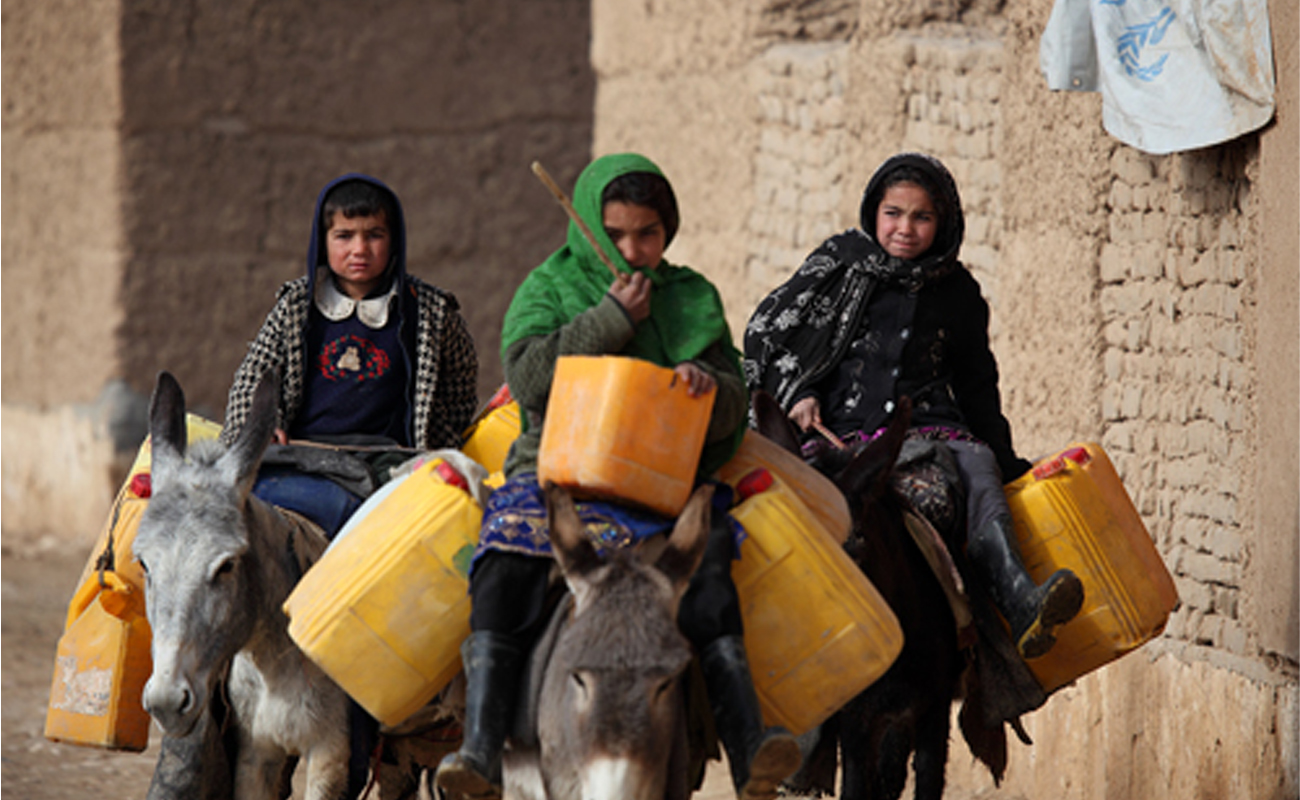Water Wars: Assessing the Stakes for Afghanistan in its Disputes with Iran
Photo credit: UNAMA (United Nations Assistance Mission in Afghanistan)
By Elham Kabir
Preface:
Recent clashes at the Afghan-Iranian border have raised concerns over a potential conflict between the neighboring countries. This violence resulted in casualties, with both Afghan and Iranian guards losing their lives. While the exact cause of the clashes remains unclear, tensions have been exacerbated by Iran's accusations that the Taliban, who currently govern Afghanistan, are obstructing the water flow to Iran's eastern regions, in violation of a The Afghan-Iranian Helmand River-Water Treaty of 1973.
Iranian President Ebrahim Raisi condemned these actions and emphasized that Iran will not tolerate any infringement on its people's rights. In response, the Taliban denied the accusations and called for a resolution based on the terms of the treaty, expressing their desire for good relations with Iran. However, the lack of clear demarcation and understandings of border boundaries since the Taliban's takeover in 2021 adds complexity to the situation.
Water Disputes: Iran and Afghanistan's Perspectives:
Iran and Afghanistan have long been engaged in a water dispute centered around the Hirmand River, also known as the Helmand River. Under a 1973 water-sharing agreement, Afghanistan is expected to provide Iran with an average of 820 million cubic meters of water annually. However, Iranian authorities claim that Afghanistan has restricted the river's flow through the construction of dams, causing significant environmental damage to Iran's Hamoun wetlands. The issue gained renewed attention when Iranian President Ebrahim Raisi called on the Taliban to honor Iran's "water rights." Raisi's envoy for Afghanistan affairs, Hassan Kazemi Qomi, expressed confidence that the issue would be resolved this year, while the Taliban maintain that they have been complying with the water-sharing agreement.
The stakes for Iran:
Iran relies on the flow of water from Afghanistan to sustain its agricultural and ecological needs, and any reduction in water supply can have severe consequences. The issue primarily revolves around the volume and flow of water from Afghanistan to Iran. According to the so-called 1973 water-sharing agreement between Iran and Afghanistan, Iran expects Afghanistan to allow an average of 820 million cubic meters of water per year into Iran, but the water-sharing agreement is multifaceted. Afghanistan faces challenges such as increasing demands for water due to population growth and agricultural needs, maintenance of water infrastructure, technical and logistical challenges, and perhaps environmental factors as well.
Where does Afghanistan stand?
According to the Afghanistan Economic Monitor of 2023, the inflation rate in Afghanistan has been on a downward trend since July 2022. In March 2023, the year-on-year headline inflation stood at 1.94 percent, a significant decrease compared to 18.3 percent in July 2022. This decline in inflation can be attributed to factors such as a stabilized exchange rate, reduced inflation pass-through into the domestic economy, easing international food and fuel prices, and improved food production in the country. In terms of currency exchange rates, the Afghan Afghani (AFN) has experienced a slight depreciation against major currencies since mid-April 2023.
Employment levels in Afghanistan have seen some improvement in April 2023, particularly in skilled and unskilled sectors, attributed to the harvesting and spring seasons. However, overall employment remains lower than in October 2022, and nominal and real wages have not shown visible improvement since November 2022. In terms of fiscal performance, total revenue receipts for the fiscal year 2022 reached AFN 193.9 billion, accounting for 98 percent of the revised budget target. Moreover, Afghanistan, instead of going into direct warfare with Iran, which is an absolute deficiency for both countries but much worse for Afghanistan, can go into a water-for-oil agreement that will benefit both countries
Conclusion:
The recent clashes and tensions at the Afghan-Iranian border have highlighted the significance of water disputes between the two neighboring countries. Iran has accused the Taliban-led government in Afghanistan of obstructing water flow, while the Taliban maintain that they are abiding by the 1973 water-sharing agreement. The stakes for Iran are high, as the country heavily relies on the water from Afghanistan for its agricultural and ecological needs.
On the other hand, Afghanistan faces challenges in meeting increasing domestic water demands due to population growth and agriculture, along with maintaining water infrastructure and other logistical issues. Amidst these challenges, exploring alternative solutions such as a water-for-oil agreement could be beneficial for both countries. Such an agreement could address the water needs of Iran while providing economic benefits to Afghanistan. This approach could be a constructive way forward to resolve water disputes and promote mutually beneficial cooperation between the two nations.
Elham Kabir has a master’s degree in international relations. He has extensive professional experience of over 10 years, both in governmental and non-governmental entities, and in executive positions in Afghanistan.
Academicians and Officials interested to publish their academic pieces on this page, please approach us through: opinions@aissonline.org.
The article does not reflect the official opinion of the AISS.

